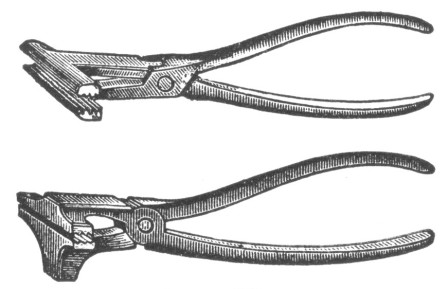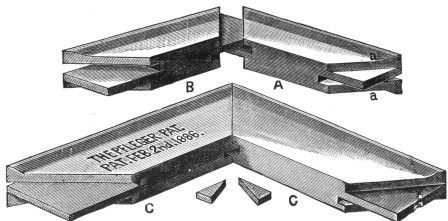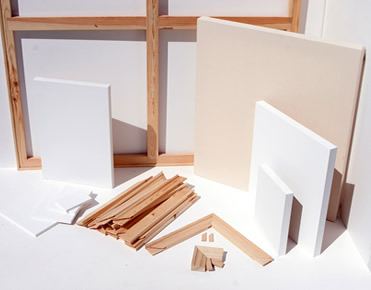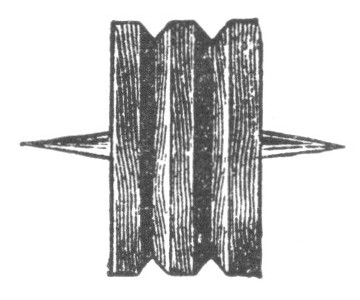Oil painting materials: Stretchers

Oil painting materials: Stretchers
Stretchers.—The keyed stretcher, with wedges to force the corners open and so tighten the canvas when necessary, is the only proper one to use. For convenience of use many kinds have been invented, but you will find the one here illustrated the best for general purposes. The sides may be used for ends, and vice versa. If you arrange your sizes well, you will have the sides of one size the right length for the ends of another. Then you need fewer sizes, and they are surer to pack evenly.
Stretching.—You will often have to stretch your own canvases, so you should know how to do it. There is only one way to make the canvas lay smoothly without wrinkles:
Cut the canvas about two inches longer and wider than the stretcher, so that it will easily turn down over the edges.
Begin by putting in one tack to hold the middle of one end. Then turn the whole thing round, and stretch tightly lengthwise, and put a tack to hold it into the middle of the other end.
Do the same way with the two sides.
Only four tacks so far, which have stretched the canvas in the middle two ways.
As you do this, you must see that the canvas is on square.
Don’t drive the tacks all the way in at first till you know that this is so.
Then give each another blow, so that the head binds the canvas more than the body of the tack does; for the pull of the canvas against the side of the tack will tear, while the head will hold more strands.
This first two ways stretching must be as tight as any after stretching will be or you will have wrinkles in the middle, while the purpose is to pull out the wrinkles towards the corners.
Now go back to the ends: stretch, and place one tack each side of the first one.
In a large canvas you may put two each side, but not more, and you must be sure that the strain is even on both sides.
Don’t pull too much; for next you must do the same with the other end which should bear half of the whole stretch.
Do just the same now with the two sides.
Now continue stretching and tacking,—each side of the middle tacks on each end, then on each side, then to the ends again, and so gradually working towards the corners, when as you put in the last tacks the wrinkles will disappear, if you have done your work well.
Don’t hurry and try to drive too many tacks into a side at a time, for to have to do it all over again would take more time than to have worked slowly and done it properly.
You may of course stretch a small canvas with your hands, but it will make your fingers sore, and you cannot get large canvases tight without help. You will do well to have a pair of “canvas pliers” which are specially shaped to pull the canvas and hold it strongly without tearing it, as other pliers are sure to do.
When you take canvases out-doors to work, you will find it useful to strap two together, face inwards, with a double-pointed tack like this in each corner to keep them apart. You will not have any trouble with the fresh paint, as each canvas will then protect the other. You can pack freshly painted canvases for shipping in the same way.
Panels.—For small pictures panels are very useful, and when great detail is desirable, and fine, smooth work would make an accidental tear impossible to mend well, they are most valuable. They are made of mahogany and oak generally.
Panels are useful, too, for sketching, as you can easily pack them. They are light, and the sun does not shine through the backs. You can get them for about the same cost as canvas for small sizes, which are what you would be likely to use, and they are often more convenient, particularly for use in the sketch-box.






This Post Has 0 Comments